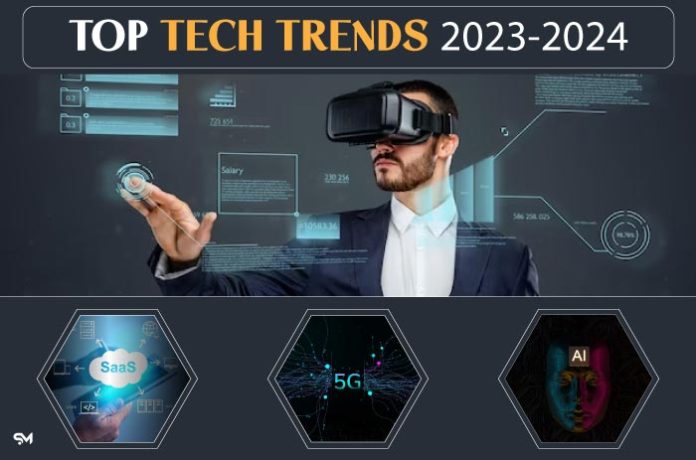Picture a world where machines exhibit cognitive abilities and flexibility, where the lines between the digital and physical realms merge seamlessly into a metaverse, and where sustainability emerges as the primary catalyst for inventive strides. As we approach the conclusion of 2024, we stand at the threshold of a tech revolution poised to transform existence in unprecedented ways. In this presentation, we’ll reveal the leading tech trends shaping the upcoming year, offering a sneak peek into the captivating advancements awaiting us in the realm of technology and innovation.
Most In-Demand Tech Trend Jobs
As January 2024 unfolds, businesses are strategically focused on hiring across various tech domains, as outlined in Robert Half Technology’s 2024 IT salary report. The report indicates a robust tech recruitment landscape, with job gains surpassing losses.
Survey results reveal that 61% of managers intend to hire for new roles this year, and 34% plan to fill vacant positions. Amidst this, there’s an intensified emphasis on retention, as 64% of tech workers express intentions to seek new opportunities.
Technology managers find recruiting top talent challenging, prompting an accelerated hiring process. Notably, 89% of tech professionals would return to the office for the right salary, underlining a vital consideration for organizations.
The report also identifies 15 high-demand tech jobs for 2024, listing salary percentiles to guide employers in remaining competitive.
Tech Trend 1: Green Hydrogen
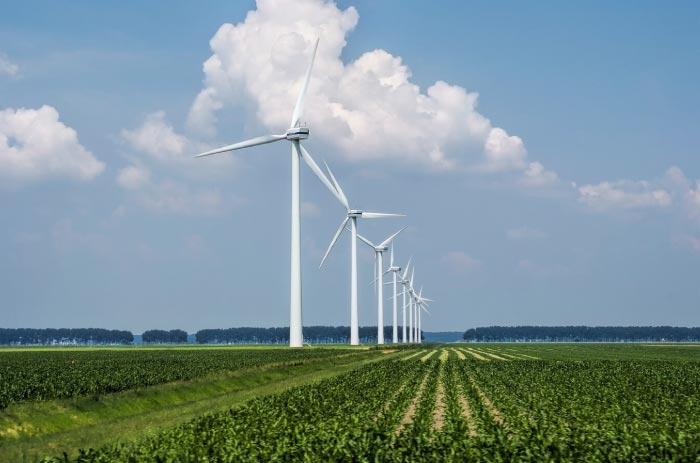
Imagine a world where we can produce clean and abundant energy from water and electricity. That’s the promise of green hydrogen, a form of renewable energy that uses electrolysis to split water molecules into hydrogen and oxygen.
Hydrogen possesses the potential to serve as a versatile energy source, enabling applications in vehicle propulsion, heating, and electricity generation. In contrast to conventional fuels, hydrogen combustion produces solely water vapor without releasing any greenhouse gases.
Green hydrogen is anticipated to assume a crucial position in the worldwide shift toward a low-carbon economy. It offers the capacity to decarbonize sectors that prove challenging to electrify, including transportation, industrial processes, power production and lead to a greener lifestyle. Green hydrogen could supply up to 24% of the world’s energy needs by 2050, creating a $2.5 trillion market.
Tech Trend 2: Generative AI
Top techtrends are reshaping the landscape in 2024, with generative AI taking center stage, promising a deeper realization of its immense potential. While the mention of artificial intelligence often instills fear in non-techies, this year will demystify its power. Despite concerns about job displacement, McKinsey noted a 44% shift in generative AI-related job postings from 2021-2022.
As this technology integrates into daily applications like search engines and office tools, people will grasp its ability to serve as a super-smart personal assistant, enhancing efficiency and productivity. By entrusting mundane tasks to AIs, individuals can unlock time for creative pursuits and human connections. Although ethical and regulatory challenges persist, 2024 is poised to mark a widespread understanding of generative AI’s transformative impact on our lives.
Tech Trend 3: Use of ChatGPT

An exceptional addition to the tech trends of 2024 is the remarkable advancement called ChatGPT. Over the initial months of this year, ChatGPT observed a substantial increase in its utilization, bringing about a transformative impact in multiple fields.
It plays a crucial role in customer support, creating content, and facilitating learning experiences. Moreover, enterprises are harnessing the exceptional conversational skills of ChatGPT to deliver tailored assistance to their valued customers.
Actually, many individuals in the writing community have started to depend on it for generating ideas and creating initial drafts. Students find it extremely useful as a virtual mentor, offering immediate clarification and personalized support.
Consequently, the swift development of ChatGPT mirrors the strides made in AI technology, propelled by profound learning and extensive training on textual information. In essence, its influence persistently reshapes the way humans interact with AI and underscores the significance of new technology in 2024.
Tech Trend 4: Internet of Things (IoT)

IoT, or the Internet of Things, is a burgeoning tech trend where numerous devices incorporate WiFi connectivity to link up with the Internet and each other. This innovation has already transformed our lives, letting us remotely secure our homes, control appliances, and monitor fitness with gadgets like Fitbits.
Yet, its potential for businesses is immense. IoT enhances safety, efficiency, and decision-making by collecting and analyzing data, enabling predictive maintenance, expediting medical care, and revolutionizing customer service. This trend is just beginning, with projections estimating 50 billion IoT devices worldwide by 2030 and global spending forecasted at $1.1 trillion in 2024.
To thrive in this booming field, aspiring IoT professionals should focus on information security, artificial intelligence, networking, hardware interfacing, data analytics, robotics, embedded techniques, and device design.
Tech Trend 5: Quantum Computing
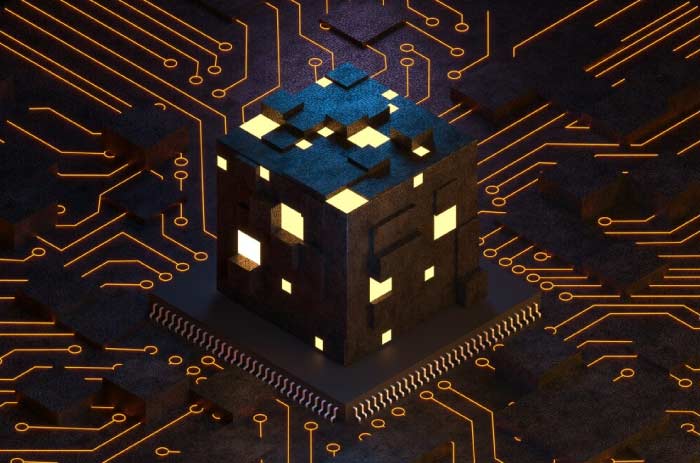
Wondering if your computer’s speed is impressive? Well, prepare to be amazed by the realm of quantum computing. Quantum computing leverages the principles of quantum physics to manipulate information in manners beyond the capabilities of traditional computers. With their ability to swiftly and efficiently tackle intricate calculations, quantum computers hold promise for various domains, including cryptography, optimization, artificial intelligence, and simulation.
For instance, these extraordinary machines may aid in deciphering encryption codes, solving optimization problems such as traffic routing, accelerating machine learning algorithms, and simulating complex quantum systems like molecules.
Quantum computing is a relatively young field, yet it is making remarkably swift progress. A blog post published on February 22, 2024, reveals an exciting development in quantum AI research. Sundar Pichai, CEO of Google, revealed that researchers have made a significant breakthrough by showcasing the error-reducing potential of increasing qubit numbers. Precedence Research discloses that the quantum computing industry is expected to achieve a market worth of $10.13 billion, with estimates suggesting a remarkable growth of $125 billion by 2030.
As time goes on, quantum computing is anticipated to become increasingly accessible and scalable, unlocking fresh opportunities and presenting novel challenges, aligning with other technology trends 2024.
Tech Trend 6: Space, The Final Frontier
In the realm of new technologies in engineering and space exploration, 2024 promises groundbreaking achievements. Nano satellites, referred to as Tiny Titans, will play a central role, revolutionizing space exploration by swarming low-Earth orbit for tasks like high-resolution Earth observation and asteroid mining. Advanced space manufacturing will be a focus, producing ultra-pure pharmaceuticals, high-performance materials, advanced electronics, and biotechnologies.
The IT trends continue in the satellite sector, driven by SpaceX, OneWeb, and Amazon’s Project Kuiper, expecting expansion in 2024. Thousands of new small satellites will join satellite constellations, emphasizing high-throughput satellites (HTS) for enhanced data transfer and more reliable communication services.
As Earth’s orbits get crowded, space management becomes critical, with the implementation of new international frameworks governing resources, debris removal programs, and standards for responsible space practices.
Propulsion innovation will see advancements in solar sails, plasma engines, and nuclear fusion for interstellar travel. The privatization of space, already underway, will intensify in 2024, with private companies engaging in healthy competition across science, manufacturing, exploration, and space travel, embracing hot technologies and ensuring sustainability becomes a standard norm.
Space technologies extend their benefits to Earth, monitoring deforestation, predicting natural disasters, and tracking crop health with unprecedented precision. This aligns with new tech tools and solutions, making a significant impact on various industries.
Lunar Station Corporation and Helios contribute to this wave, providing cutting-edge technologies for visualizing the lunar environment and in-situ resource utilization for lunar and Martian missions, respectively. Lunar Station’s MoonHacker and Moon Navigational Services offer advanced lunar environmental intelligence, while Helios focuses on oxygen production from lunar and Martian surfaces.
Tech Trend 7: Software Supply Chain & Zero Trust Security

- Prioritizing the early detection of security vulnerabilities in the software supply chain remains a key focus in tech trends this year. The implementation of DevSecOps will be accelerated in 2024 and will continue to gain widespread adoption.
- To enhance user experience and mitigate security risks, Gartner suggests the establishment of a Digital Immune System. Software Supply Chain Security is crucial in establishing a robust digital defense mechanism.
- Forrester’s cybersecurity predictions encompass various areas, including the increasing adoption of Zero Trust, the emergence of Secure Access Service Edge (SASE), the rise of ransomware, security breaches, and threats, as well as significant data breaches.
- Alongside traditional communities like NIST, open-source security initiatives, such as the Open Source Security Foundation (OpenSSF), will continue to emerge, emphasizing the importance of security in open-source software.
Tech Trend 8: SuperApps
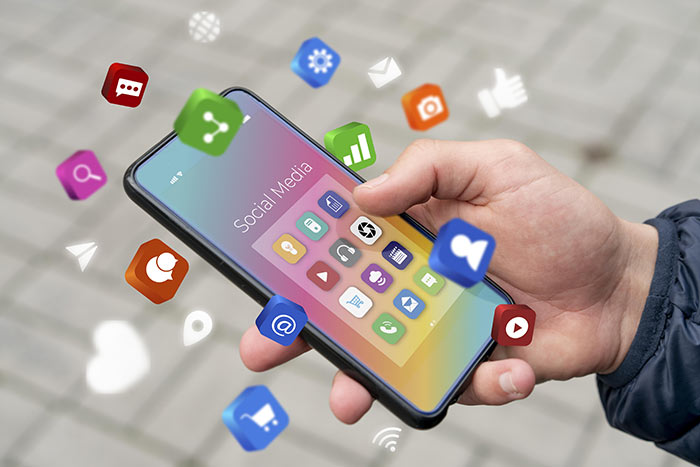
The concept emerges from the fusion of an app, a platform, and a digital environment, all housed within a single application. It resembles a versatile tech tool, comparable to a Swiss army knife, integrating various functionalities with a unified objective, adaptable to individual user requirements.
They operate within a shared system that provides a wide range of services, enabling the creation of tailored, captivating, and extensive user interactions. They also facilitate the integration of enterprise features across desktop and mobile devices, including workflow management, collaboration tools, and messaging systems.
In the future, these services will also be compatible with chatbots, IoT-based technologies, and immersive environments similar to the metaverse., reflecting the ever-evolving landscape of new tech trends.
Tech Trends 9: Metaverse

The Metaverse remains a prominent focus in 2024, building on its momentum from last year. Marked by Facebook’s transformation into Meta, the Metaverse concept rapidly gained traction. Industry giants like Hyundai, Microsoft, Nvidia, Gucci, and Nike swiftly embraced the idea, forming Metaverse spaces for collaborative digital transformations.
This technology trend is captivating business and tech leaders worldwide, with over 25% of users eager to invest time and money in virtual reality and augmented reality tools for the Metaverse. Key developments for 2024 include:
- Metaverse as a Marketing Channel: Forward-thinking marketers are recognizing the permanence of the Metaverse as a transformative digital realm, catering to Gen-Z and millennials with immersive experiences. Major brands like JP Morgan, HSBC, Gucci, and Nike are already establishing their Metaverse presence.
- Artificial Intelligence (AI): AI is central to the Metaverse’s development, enhancing virtual environments and avatars. Tech giants are financing heavily in AI for Metaverse capabilities, with applications ranging from gaming to content moderation.
- Augmented Reality (AR) and Virtual Reality (VR): These technologies are pivotal in the Metaverse’s growth, with high-end devices set to elevate the experience. Haptic suits are also emerging for realistic immersion.
- Internet of Things (IoT): IoT integration enhances the Metaverse, offering seamless interaction with the physical world and user-centric experiences. In smart factories, IoT facilitates equipment monitoring and feedback.
- Blockchain & Decentralization: Blockchain supports Metaverse development, fostering trustless transactions and secure data storage. Leading brands are leveraging blockchain for digital goods in the Metaverse.
As the Metaverse gains momentum, its impact on business models and communication in the digital world is set to be transformative. Gartner projects that in the next three years, a quarter of the global population could devote at least one hour every day to the Metaverse, underscoring its significance in reshaping our digital landscape.
Tech Trend 10: Education Tech

Technology has long influenced education, from the printing press to online learning. Emerging trends like AI, digital resources, and new learning methods will continue shaping education in 2024 and beyond. Here are 10 leading emerging trends in Education tech.
- Mobile Learning and Digital Content Platforms: The popularity of e-learning platforms, which burgeoned during the pandemic, is providing global access to high-quality educational resources.
- AI-Powered Learning Environments: Artificial intelligence enhances classroom experiences through facial recognition, natural language processing, and personalized learning.
- Augmented Reality (AR) and Virtual Reality (VR): These immersive technologies enrich learning by offering tailored simulations and experiences.
- Gamification of Learning: Incorporating game elements into education fosters engagement and retention.
- Wearable Technology: Smartwatches and VR headsets revolutionize learning by offering personalized guidance and accessibility.
- Automated Assessments: Automation streamlines student evaluation and provides valuable insights for improvement.
- Adaptive Learning: Courses are becoming personalized to cater to individual student needs, enhancing learning outcomes.
- Cloud Computing: Educators use cloud technology for data storage, accessibility, and collaboration.
- Social Media in Learning: Social media platforms facilitate knowledge sharing and transform teaching-learning.
- Mobile Learning: The prevalence of mobile devices promotes on-the-go learning and accessibility to educational content.
These trends signify an exciting educational transformation, promising more dynamic and effective learning environments.
Tech Trend 11: 5G Technology
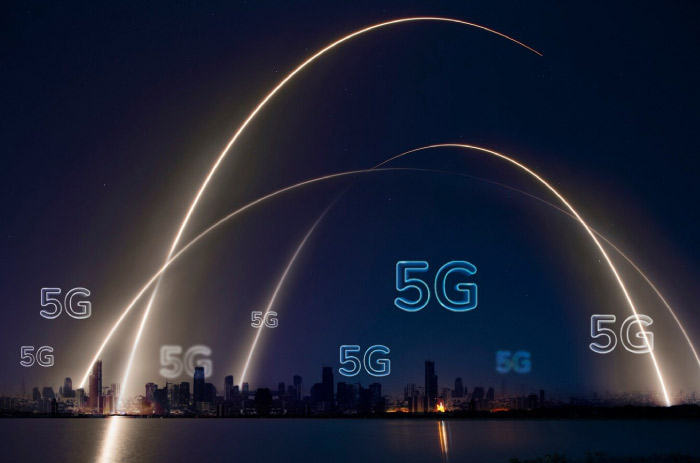
As the fifth generation of telecommunication data continues to evolve, several key trends and considerations emerge. Firstly, the security landscape is a critical concern, with the rise of 5G-based smart city projects posing new cybersecurity challenges. The proliferation of 5G IoT devices will require specialized security measures to protect against potential breaches, leading to heightened vulnerabilities
Furthermore, regulatory bodies worldwide are expected to impose security requirements for 5G technology, as demonstrated by Spain’s recent regulations. It may involve equipment certification, supply chain diversification targets, and risk mitigation measures.
The timing of 5 G’s widespread availability coincides with the rising demand for remote and hybrid work arrangements. Enhanced network speed will enable seamless connectivity for remote workers, albeit with potential implications for user performance monitoring.
Lastly, 5G is poised to play a pivotal role in the development of the Metaverse, driven by its ultra-dense, low-latency computing capabilities. The convergence of 5G and the Metaverse is anticipated to provide the high-speed, low-latency experience required for sophisticated applications, necessitating advanced computing infrastructure at the network’s edge. This intersection is expected to unfold in 2024, with subsequent deployments in the following years.
Read also: iPhone Temperature Sensor
Tech Trend 12: Sustainable Energy Solutions
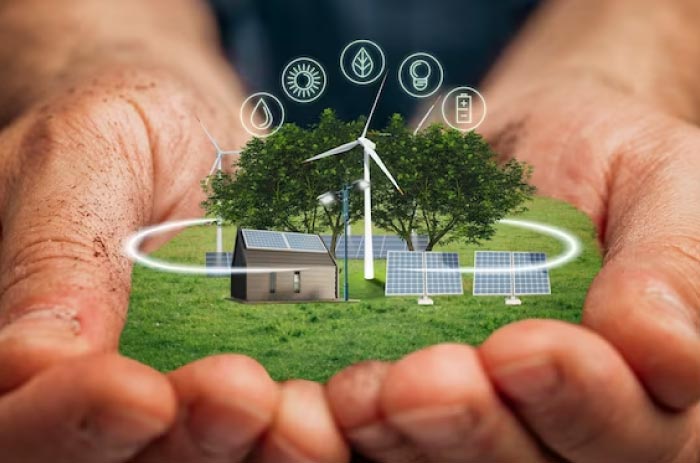
Innovation is surging in the energy sector, driven by technology, paving the way for sustainable energy solutions. From artificial intelligence (AI) to data utilization, the energy landscape is evolving to meet growing demands.
- Blockchain ensures secure electricity transactions in renewables, enabling global purchases from local sources bolstering sustainability and peer-to-peer trading.
- Advanced Robotics streamlines energy resource management, optimizes grid contributions, and enhances safety with drone-based energy surveying.
- Green hydrogen is a renewable, high-density energy source, though efficiency challenges persist in hydrogen fuel-cell applications.
- Grid integration addresses energy delays and losses, using advanced semiconductors like Gallium Nitride and Silicon Carbide for grid control, supporting electric vehicles, and bi-directional charging.
- Bioenergy harnesses biomass from natural materials for energy production, utilizing various conversion processes.
- Wind energy, onshore and offshore, is forecasted to generate substantial global energy.
- Hydropower and ocean-based tidal energy contribute significantly to renewable energy production.
- Distributed energy storage systems offer decentralized energy generation and storage solutions, including lightweight solid-state batteries.
- Artificial intelligence and big data enable efficient energy management and predictive maintenance, which is crucial for renewables.
- Advanced photovoltaics, including integrated PV, floatovoltaics, and agrivoltaics, receive significant investment, offering sustainable energy solutions that continue to evolve to meet increasing demands
Tech Trend 13: Improved Micro-mobility

The micro-mobility market is poised for significant growth in 2024, driven by various trends and predictions from industry experts. Shared e-scooters, operated by Voi, anticipate more European cities adopting tender-based contracts for easier regulation. We expect policymakers will avoid imposing burdensome regulations to ensure the sustainability of shared micro-mobility solutions.
The microcar segment is also expanding, with Invers and Joyride noting an increasing number of car-sharing initiatives featuring microcars. These vehicles offer efficient charging, easy parking, and affordability, potentially reaching a $90 billion market by 2030.
E-moped/bike hybrids are gaining traction, especially in countries like India, Indonesia, Turkey, and the USA. EFO Ventures reports strong demand for Ottr e-moped subscriptions in the UK and Europe.
We expect shared e-bikes to grow with subscription-based models, offering benefits to users and fostering brand loyalty.
Furthermore, micromobility is set to play a more prominent role in last-mile delivery, addressing logistical challenges and gridlocked cities.
IoT and connectivity are also evolving, unifying various systems to enhance capabilities at lower costs. Drover AI predicts advancements in IoT technologies.
Fleet optimization faces challenges in 2024, with funding struggles and regulatory obstacles. Operators may exit overcrowded markets and increase prices, leading to fewer rides and lower vehicle utilization, as predicted by Zoba.
Tech Trend 14: Autonomous Revolution
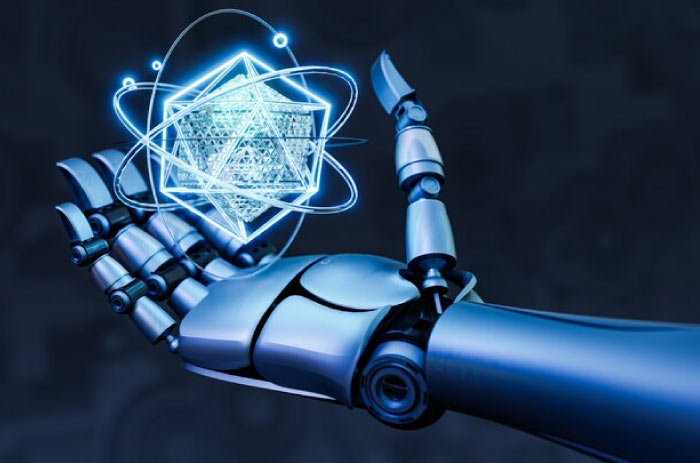
The work on autonomous driving technology started a few years back, and we hope to see new advancements in 2024. Almost all big automakers are working on self-driving tech, with Tesla being the pioneer. The American automaker’s autopilot is advancing to meet Level 5 Autonomy – allowing the cars to drive themselves. You don’t have to be an excellent driver to run a self-driving car, but you must possess all the essential driving skills and deep pockets to actually own such a vehicle
In 2024 and beyond, the autonomous vehicle landscape is marked by eight key innovation trends:
- Internet of Things (IoT): IoT connects autonomous vehicles, enabling real-time data acquisition and analysis for safer navigation. LiDAR sensors, enhance detection capabilities and spotting obstacles up to 300 meters away.
- Artificial Intelligence (AI): AI algorithms enhance object detection, route optimization, and in-car infotainment. UK’s dRISK uses AI to train vehicles, while German startup Arctictern monitors drivers for safety.
- Vehicle Connectivity: V2V, V2I, and V2P solutions improve communication between vehicles and infrastructure. The optical fiber-based system enhances object detection, while VEStellaLab aids indoor parking with V2I tech.
- Advanced Driver Assistance Systems (ADAS): Sensor tech and AI enable features like adaptive cruise control (ACC) and blind spot monitoring. M-ADAS offers advanced ACC, and UK-based Hypermile improves fuel economy with AI.
- Big Data & Analytics: Big data enhances deep learning algorithms for safer autonomous vehicles. Swedish startup Kognic measures data quality, while UK’s Aidrivers offers a 3D simulation platform.
- Automotive Cybersecurity: Startups like Saesol Tech focus on V2X cybersecurity, while Foretellix’s Foretify platform automates AV testing and enhances security.
- Extended Reality: AR and VR facilitate testing and entertainment. VisualARise offers AR-based holographic displays, and CY Vision develops 3D holographic HUDs.
- Blockchain ensures secure data management, simplifies transactions, and incentivizes data sharing. UAE-based Mobilian and Singaporean Autonomy Chain provide blockchain solutions for AV security and data exchange.
These trends collectively drive innovation in autonomous vehicles, making them safer, more connected, and more efficient for the road ahead.
Tech Trend 15: The Pharmaceutical Transformation & Telemedicine

The global healthcare information systems industry, appraised at $287.8 billion in 2022, is poised for remarkable growth, projected to reach an astounding $528.5 billion by 2030. This explosive expansion is driven by the urgent need to streamline healthcare processes, reducing paperwork and bureaucratic obstacles. Governments worldwide are pushing for digital transformation in healthcare, and innovative products and collaborations are emerging in response.
Importantly, emerging healthcare technology trends are improving patient outcomes. Medical breakthroughs have significantly increased survival rates for heart attack and cancer patients. These advancements are reshaping healthcare with a focus on sustainability and cutting-edge care.
Key healthcare technology trends include:
- Digital Transformation: Electronic Health Records (EHR) and interoperability are digitizing healthcare data management.
- Telehealth: Telemedicine and Remote Patient Monitoring (RPM) enable remote healthcare services.
- AI and ML: Artificial Intelligence (AI) and Machine Learning (ML) enhance diagnostics and data analysis.
- Internet of Medical Things and Wearables: These tech and wearable devices provide real-time health monitoring.
- Virtual and Augmented Reality: VR and AR improve medical training, diagnostics, and treatment.
- Blockchain Security: Blockchain ensures secure and transparent healthcare data management.
- Personalized Medicine: Genomics tailors treatments to individual genetic profiles.
- Robotics and Automation: Automation streamlines administrative tasks and improves surgical precision.
- Predictive Analytics: Data-driven insights anticipate patient needs and optimize resource allocation.
- Mental Health Tech: Telepsychiatry and mental health apps offer accessible mental health support.
- Organ Care and Bioprinting: Organ preservation technology and bioprinting advance organ transplantation.
- Digital Twin Technology: Digital twins enable virtual testing and personalized patient care.
Conclusion
Navigating the tech landscape of 2024 and beyond reveals a world poised for significant change. Success hinges on adaptability, innovation, and agility. AI’s influence, the Metaverse’s emergence, and tech democratization redefine our future. EdTech’s growth, transparency, and data democratization reshape industries. 5G expansion, eco-friendly energy, and micro-mobility drive progress. Advancements in autonomy, IoT, and quantum computing are on the horizon. Software supply chains, zero-trust security, and SuperApps redefine digital experiences. These tech trends signal evolution, offering opportunities and challenges that’ll shape our 2024 tech landscape and beyond.
Read also: How to Change Screen Timeout on iPhone


